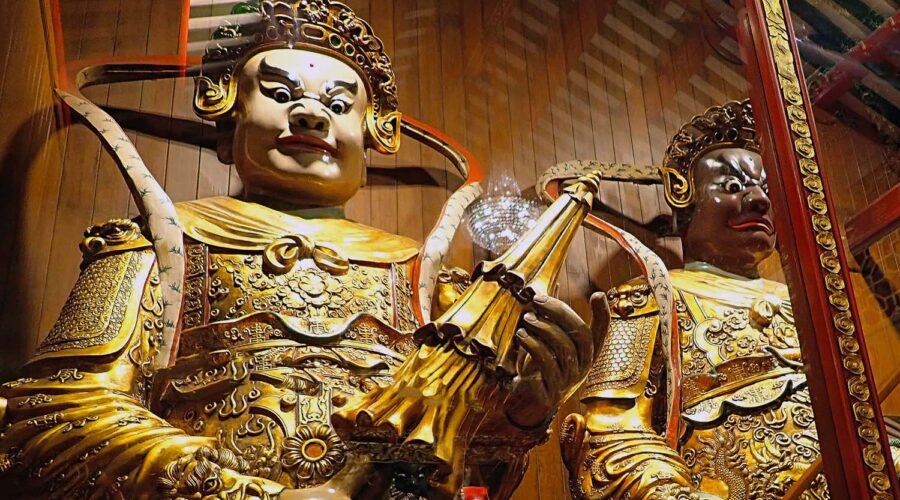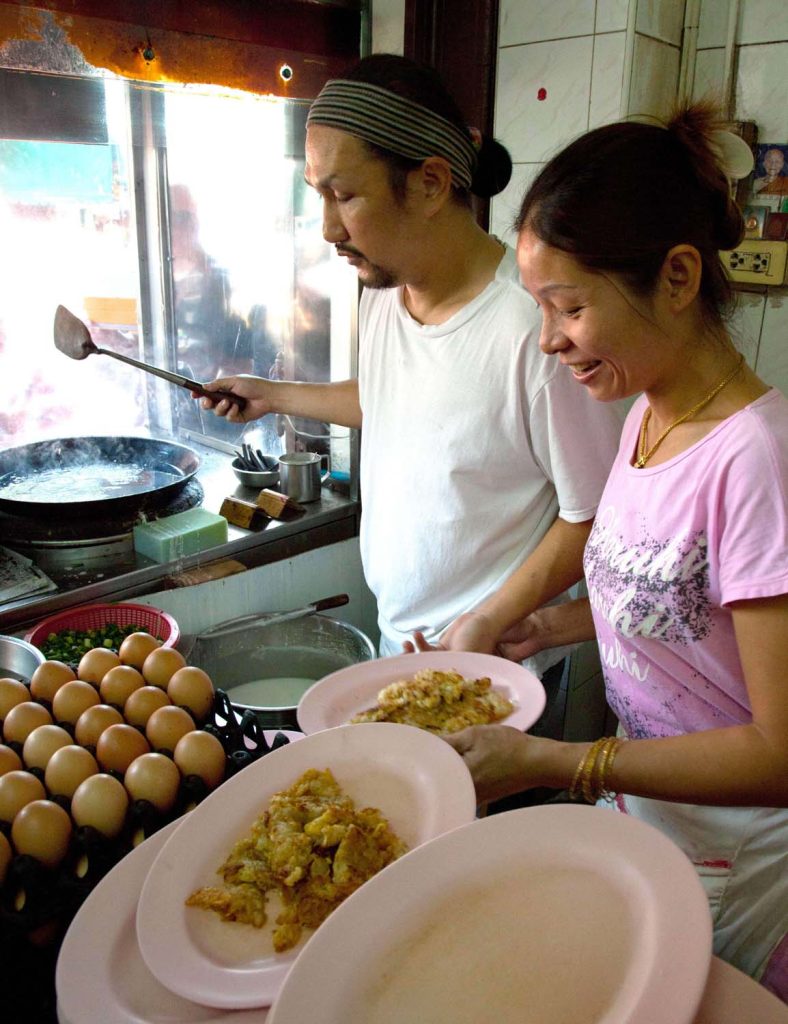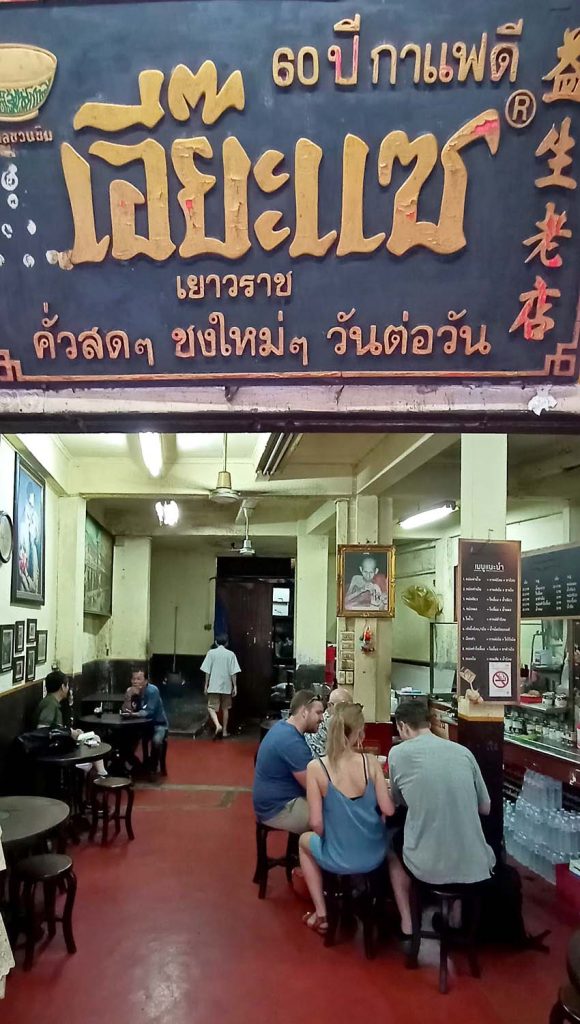A Bite-Sized Tour of Big Chinatown
Bangkok at times can seems like the Thai version a Russian babushka doll. It opens to reveal neighbourhoods within villages, villages within towns and towns within the Great City of the Angels. John Borthwick takes us on a deep dive…
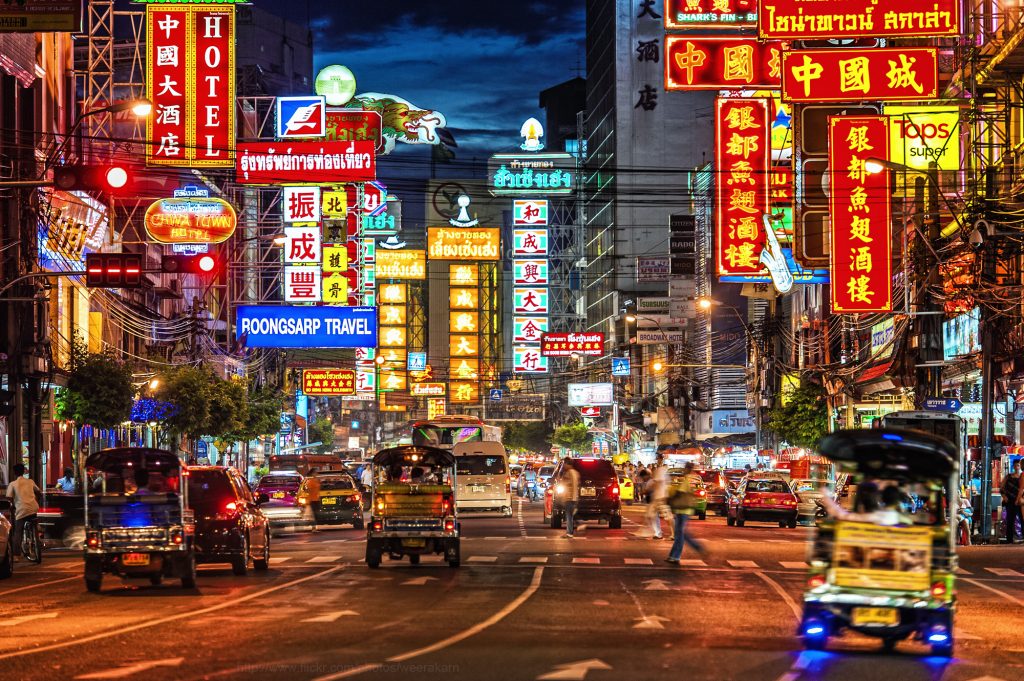
Bangkok’s largest town-within-a-city by far is Yaowarat, reputedly the world’s oldest, of not largest Chinatown. Wanting to drill deeper into this complex place I join an Urban Adventures’ walking tour called “Chinatown Sights and Bites”.
We start where Chinatown’s most-visited attraction Wat Traimit, the Golden Buddha Temple, is home to a massive, five-metre, 5.5-tonne Buddha statue made almost entirely of, yes, gold. Our guide, Khun Ae turns out to be an unstoppable raconteur as he unfurls a shaggy-dog legend of the 13th century Buddha statue’s loss (centuries ago), discovery (by whom?), disguise (beneath stucco), displacement (by flood), re-discovery (by luck), revelation (by accident) and then ultimate relocation here to Chinatown.
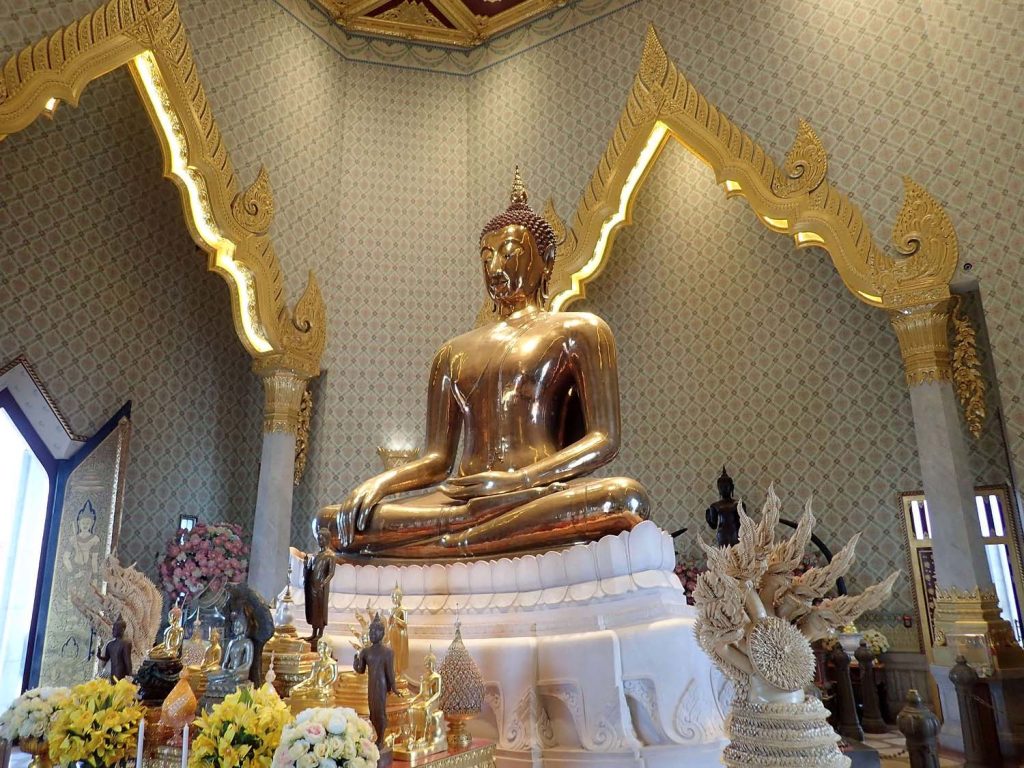
We head on through a maze of side streets where chillied, steaming, stir-fried aromas billow from fiery woks, pinging our lungs, eyes and appetites. Khun Ae steers us down a narrow walkway alley where painted doors open onto hobbit-size homes, to arrive at a tiny, three-table eatery. He orders bowls of tom sap, a zinging, Thai-Lao soup that stars pork, ginger, galanga and lemon grass. I leave nothing but the spoon in mine.
Powered-up, we’re soon on unsung Soi Phat Sai where the Easae tea shop, run by the same Thai-Chinese family for four generations, has served traditional brews since 1927. Taking our seats at old circular tables, we maintain traditions, old and new. There’s an abacus by the cash register, a WiFi password on the wall and, as foreigners, us fitting in perfectly by sticking out.
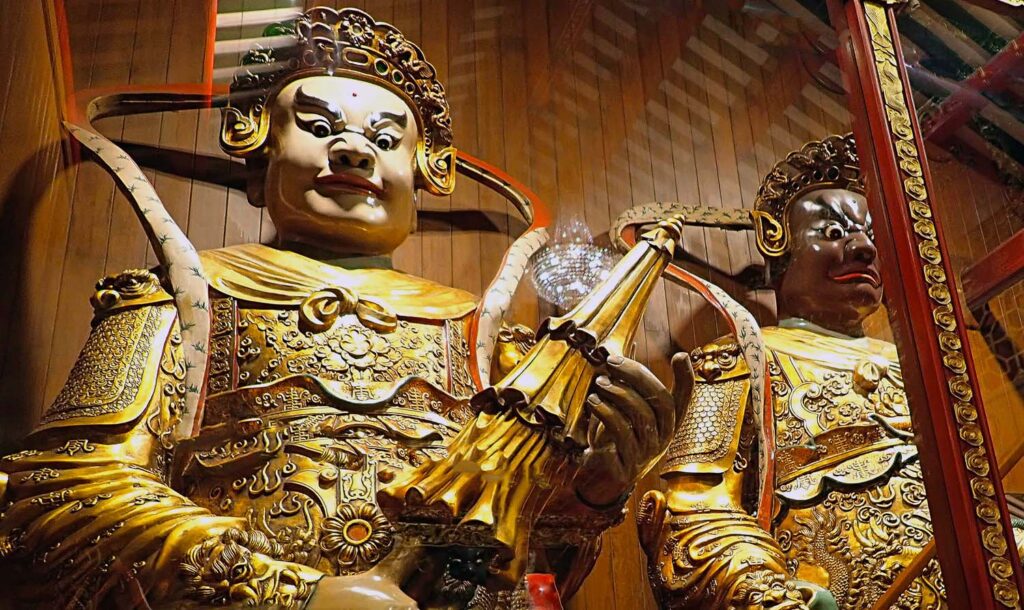
We roll further along to Bangkok’s largest and most important Chinese shrine, the 1871 Dragon Lotus Temple — Wat Mangkon Kamalawat. Beneath the fierce, bulging-eyed gaze of its giant warrior statues the city’s Chinese community come to make merit at the wat’s incense-clouded altars and then to have their fortunes told.
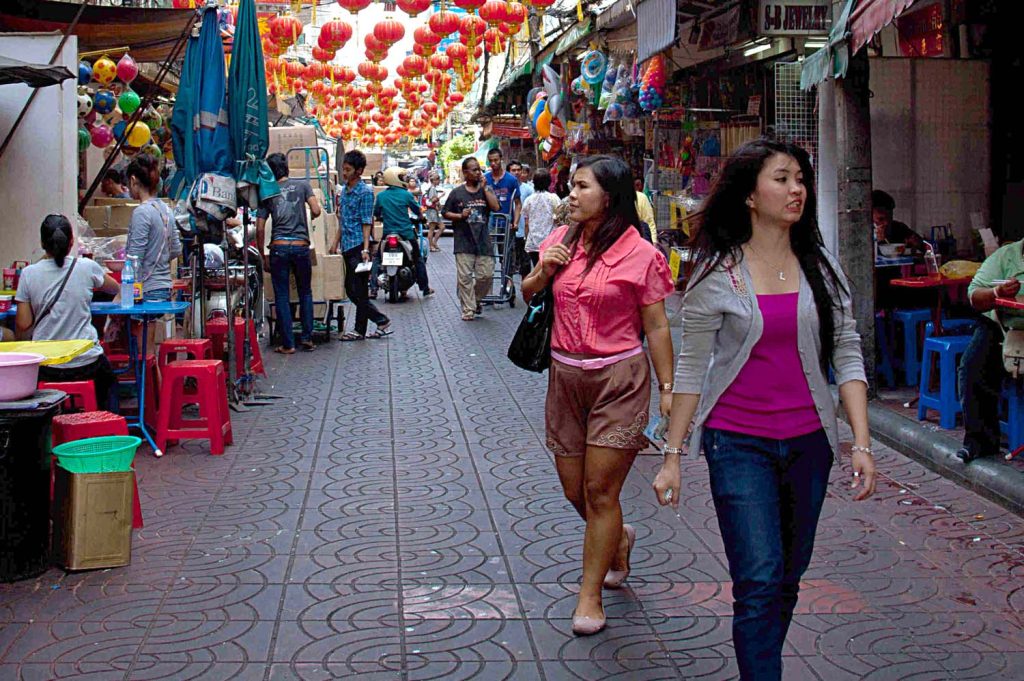
Emerging from a backstreet, we’re suddenly on Chinatown’s famous main drag, Yaowarat Road, a broad, neon-blitzed thoroughfare that’s programmed to perpetually buy, sell and eat. In feng shui terms Yaowarat is a “golden dragon area” — that is, the ideal place for turning a baht or buck. Or preferably a million of either. If Chinatown is a golden dragon, this is its jewelled spine.
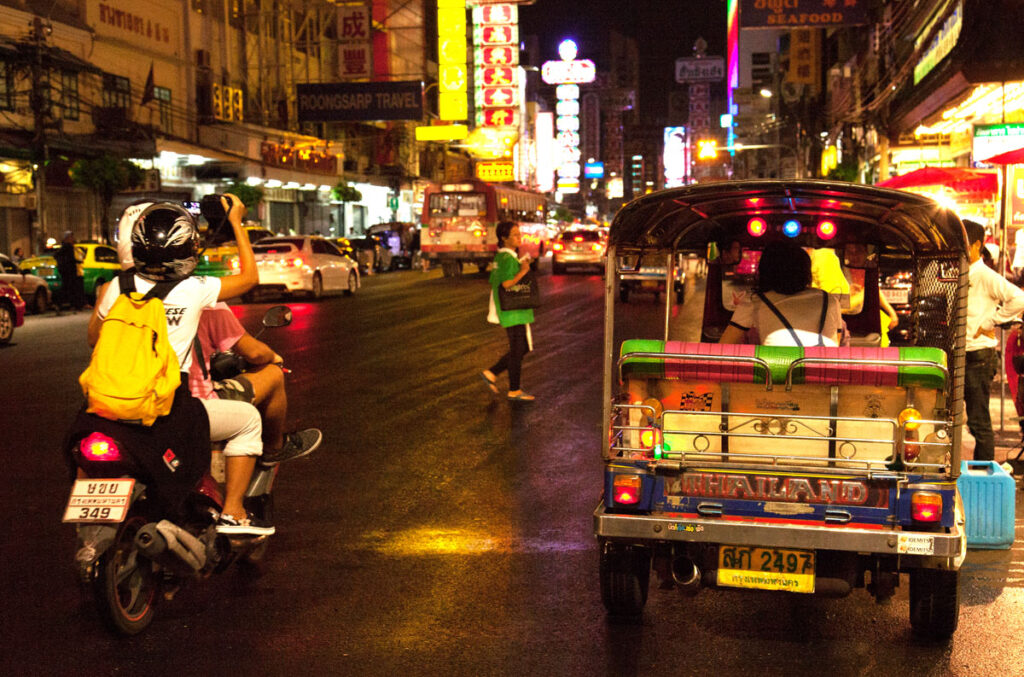
Beside apothecaries, goldsmiths and Blade Runner-style alleys we snack on delicious skewers of grilled pork and chicken fresh from a street hawker’s cart. Exotica aside, busy Yaowarat is the engine-room of the thriving Thai-Chinese economy and, in truth, is much more about high finance and trade than the Orientalism of its street show.
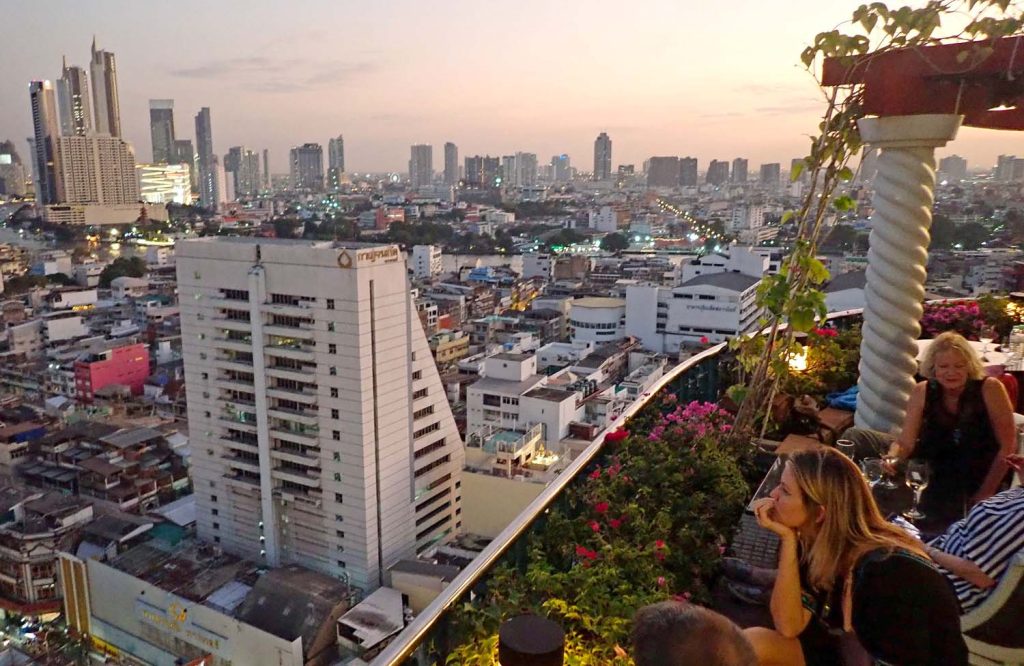
I can’t eat another thing, which is fine because we’re leaving behind Yaowarat’s endless progressive feast. Our final destination will be mojitos, not food. At the venerable Grand China hotel we take a lift and then follow Ae up narrow stairs to a little-known roof bar where the view of sunset across the Bangkok skyline is the real attraction. In a city that’s home to a dozen lofty sky bars boasting 360-degree views and flocks of trending mixologists, the Grand China’s less celebrated watering hole is, to be generous, only 50 percent as flash — but gloriously so. At half the altitude (23rd floor), with half the view (only 180-degrees) and drinks at half the price, it might just be twice the fun.

